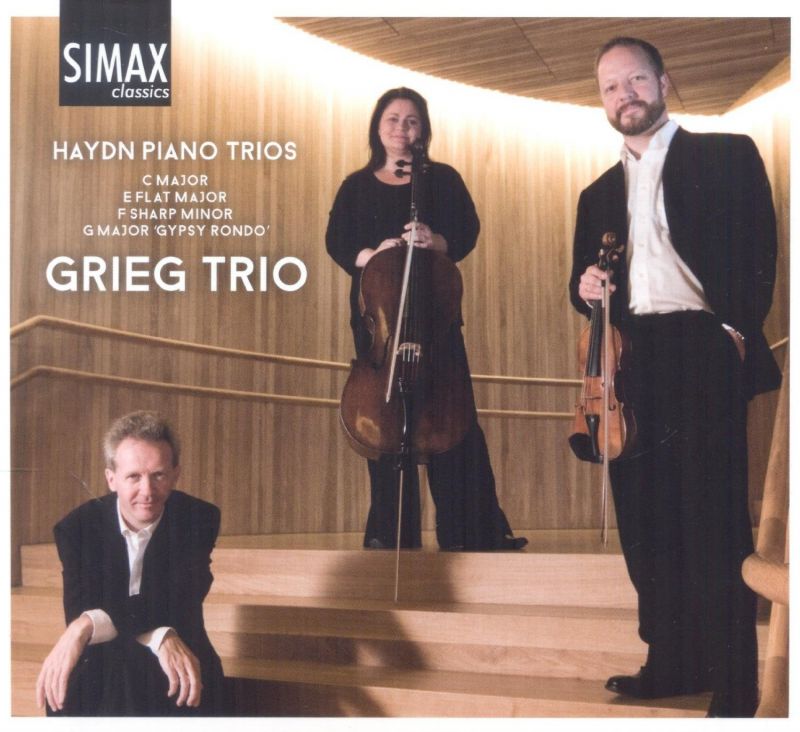HAYDN Piano Trios Nos 39, 40, 42 & 43
View record and artist detailsRecord and Artist Details
Composer or Director: Joseph Haydn
Genre:
Chamber
Label: Simax
Magazine Review Date: AW16
Media Format: CD or Download
Media Runtime: 65
Mastering:
DDD
Catalogue Number: PSC1267

Tracks:
| Composition | Artist Credit |
|---|---|
| Keyboard Trio No. 27 (Sonata) |
Joseph Haydn, Composer
Grieg Trio Joseph Haydn, Composer |
| Keyboard Trio No. 30 (Sonata) |
Joseph Haydn, Composer
Grieg Trio Joseph Haydn, Composer |
| Keyboard Trio No. 26 (Sonata) |
Joseph Haydn, Composer
Grieg Trio Joseph Haydn, Composer |
| Keyboard Trio No. 25, 'Gipsy Trio' |
Joseph Haydn, Composer
Grieg Trio Joseph Haydn, Composer |
Author: Richard Wigmore
Here and in the potentially hilarious Presto finale of the C major, No 27, the Grieg present Haydn as a gracious, elegantly pigtailed figure rather than the purveyor of subversive mischief evoked by the Viennese group or (in No 27) András Schiff and friends (Decca/Eloquence, 1/96). In the Grieg Trio’s hands No 27’s finale bounces along happily enough. With sharper (and more varied) accents, more vivid dynamic contrasts and sly touches of timing, Schiff and accomplices nail it as a masterpiece of controlled comic mayhem. In the subdued minuet finale of the F sharp minor Trio, No 26 – perhaps Haydn’s melancholy farewell to his lover, Rebecca Schroeter? – the Grieg sound briskly stoical where other groups, including the Florestan (Hyperion, 4/09) and the Kungsbacka (Naxos, 1/12) find more poetry and pathos.
The Grieg are best, I think, in the four slow movements – always justly paced and thoughtfully phrased – and in the magnificent E flat, No 30, one of the best-kept secrets among Haydn’s late trios. While dynamics are still rather flattened (not entirely the fault of the resonant church acoustic), the noble first movement has the requisite breadth, the frequent dips to the minor sensitively inflected. With the cello given its due in the balance, you can savour Haydn’s glorious, wide-ranging bass-lines here and in the deep-toned Andante. If you see Haydn as the urbane man-of-the world portrayed in the famous painting by John Hoppner, then the Grieg’s skilled and civilised performances should give much pleasure. For me, they tend to circumscribe the music’s expressive range and, crucially, short-change the animal spirits and sheer impish glee that is surely a crucial part of Haydn’s creative persona.
Explore the world’s largest classical music catalogue on Apple Music Classical.
Included with an Apple Music subscription. Download now.

Gramophone Digital Club
- Digital Edition
- Digital Archive
- Reviews Database
- Events & Offers
From £9.20 / month
Subscribe
Gramophone Club
- Print Edition
- Digital Edition
- Digital Archive
- Reviews Database
- Events & Offers
From £11.45 / month
Subscribe
If you are a library, university or other organisation that would be interested in an institutional subscription to Gramophone please click here for further information.






